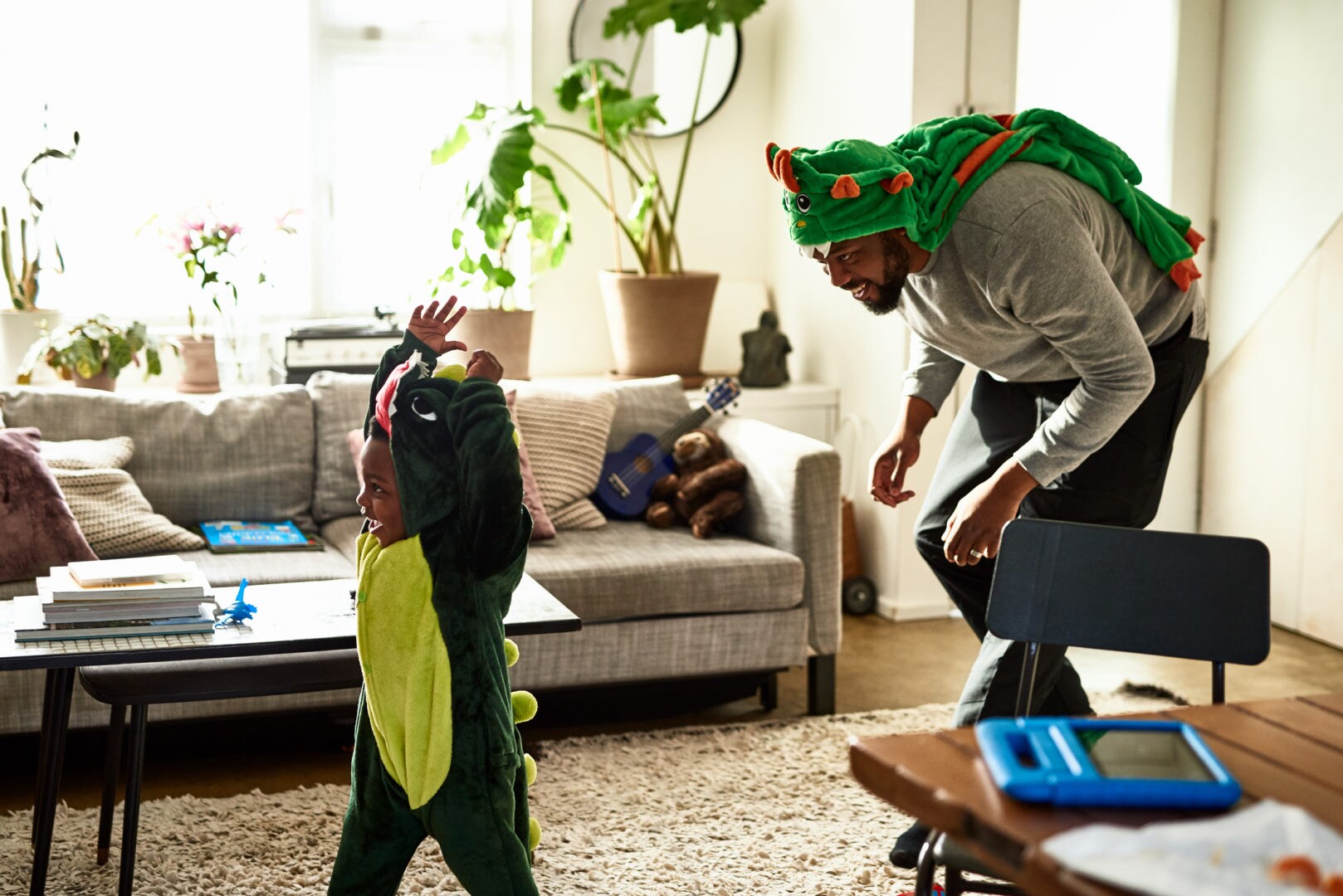Days when you’re stuck inside with a little one start to feel like time is standing still. Young kids, possibly more than anyone else, tend to reverberate in excess energy when they don’t have an outlet for it — and in ways that really aren’t pretty. Yep, time to get them moving so they can let it all out.
According to the American Academy of Pediatrics (AAP), physical activity helps prevent obesity, heart disease and diabetes, improves sleep, builds strong bones and muscles, diffuses stress, boosts self-esteem, improves an overall sense of well-being and more. So at what age should we start educating kids on the importance of physical activity?
The AAP recommends that infants get at least 30 minutes of “tummy time” and other interactive play, throughout each day. SHAPE America, the Society of Health and Physical Educators, offers guidelines starting from birth. In other words, it’s never too soon to start when it comes to getting physical.
Keep babies, toddlers and preschoolers entertained and healthy — even when you have to be inside — with these tips and fun indoor exercises for little ones.
Know the physical activity guidelines for kids
SHAPE America shares the following physical activity guidelines for kids from birth to age 5 and their parents or caregivers.
Infants (birth to age 12 months)
- Interact with infants in daily physical activities that are dedicated to exploring movement and the environment.
- Place infants in settings that encourage and stimulate movement experiences and active play for short periods of time several times a day.
- Offer physical activity that promotes skill development in movement.
- Place infants in an environment that meets or exceeds recommended safety standards for performing large-muscle activities.
- Promote movement skills by providing opportunities for structured and unstructured physical activity.
Toddlers (age 12 to 36 months)
- Help toddlers to engage in a total of at least 30 minutes of structured physical activity each day.
- Provide time and space for toddlers to engage in at least 60 minutes — and up to several hours — per day of unstructured physical activity.
- Avoid sedentary behaviors for more than 60 minutes at a time, except when sleeping.
- Give toddlers ample opportunities to develop movement skills that will serve as the building blocks for future motor skillfulness and physical activity.
- Provide access to indoor and outdoor areas that meet or exceed recommended safety standards for performing large-muscle activities.
- Promote movement skills by providing opportunities for structured and unstructured physical activity and movement experiences.
Preschoolers (ages 3 to 5)
- Help preschoolers accumulate at least 60 minutes of structured physical activity each day.
- Provide time and space for preschoolers to engage in at least 60 minutes — and up to several hours — of unstructured physical activity each day.
- Avoid sedentary behaviors for more than 60 minutes at a time, except when sleeping.
- Encourage preschoolers to develop competence in fundamental motor skills that will serve as the building blocks for future motor skillfulness and physical activity.
- Provide access to indoor and outdoor areas that meet or exceed recommended safety standards for performing large-muscle activities.
- Promote movement skills by providing opportunities for structured and unstructured physical activity.
Try these fun indoor exercises for little ones
“With this age group, I love doing movement to music,” says Len Saunders, best-selling author, motivational speaker and exercise physiologist. “Kids this age respond positively to music.”
Saunders organizes national fitness initiatives like Project ACES each year, where millions of children exercise simultaneously each May.
To really get your kiddo in the mood to move, Saunders says that parents should play familiar songs — like the “Chicken Dance” or the “Hokey Pokey.” “These songs may be old to you but new to the kids,” he adds.
“Another idea for this age group is to have them make shapes of letters of the alphabet,” Saunders says. “For example, if they make the letter ‘T,’ they stand up straight with their arm out straight.”
With young ones, organized sports or even formal exercises aren’t as crucial. Saunders explains that giving them free play time is the goal.
“Letting the kids just crawl around the house, for the younger ones, or run around the playground all work, as long as they are moving,” he says.
If you want to engage the kids while also tidying up, then consider doing an activity like the sock toss game. Here’s how:
- Using a laundry basket or box and multiple pairs of socks, have your kiddo stand up and toss paired socks into the basket; this cultivates movement and throwing skills, strength and coordination.
- For added movement when you’re done, lead the kids in a victory lap or two around the room to raise their heart rate.
Learn the physical and mental skills they’re developing
- Gross motor skills:
- They’re starting to develop basic gross motor skills like hand-eye coordination and balance.
- Learning and understanding:
- They’re developing an awareness of quantity by exploring materials and putting socks into containers of various sizes.
- They may begin to imitate words and counting by using some names or numbers.
- They’re also starting to develop an understanding of their bodies in relation to the objects and space around them (also know as “body awareness”).
- Physical development:
- They begin to develop increased control of arm movements by doing activities like throwing at targets.




